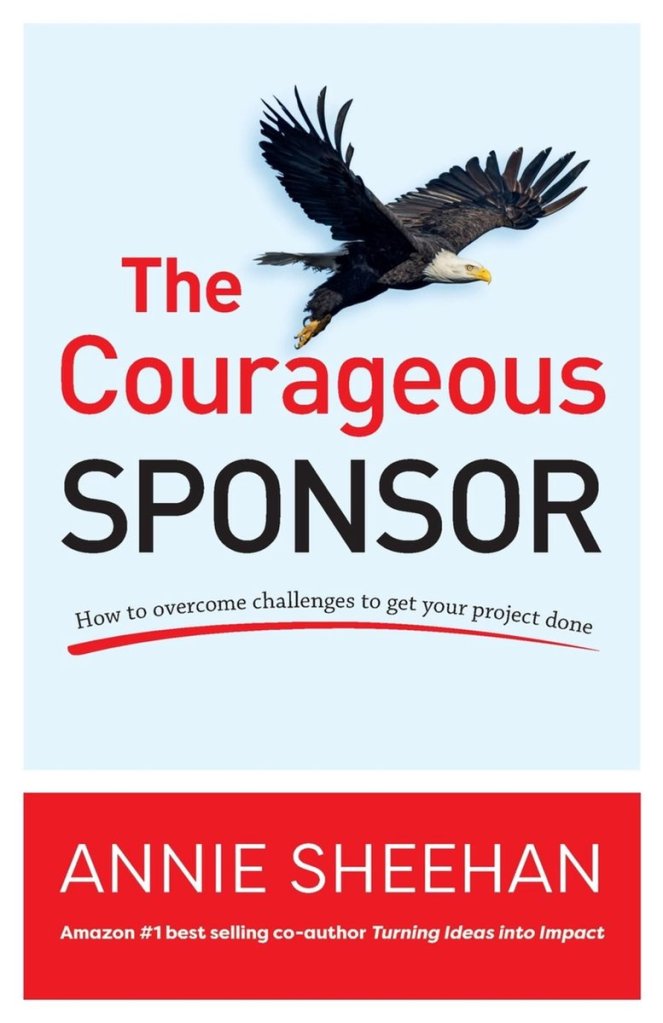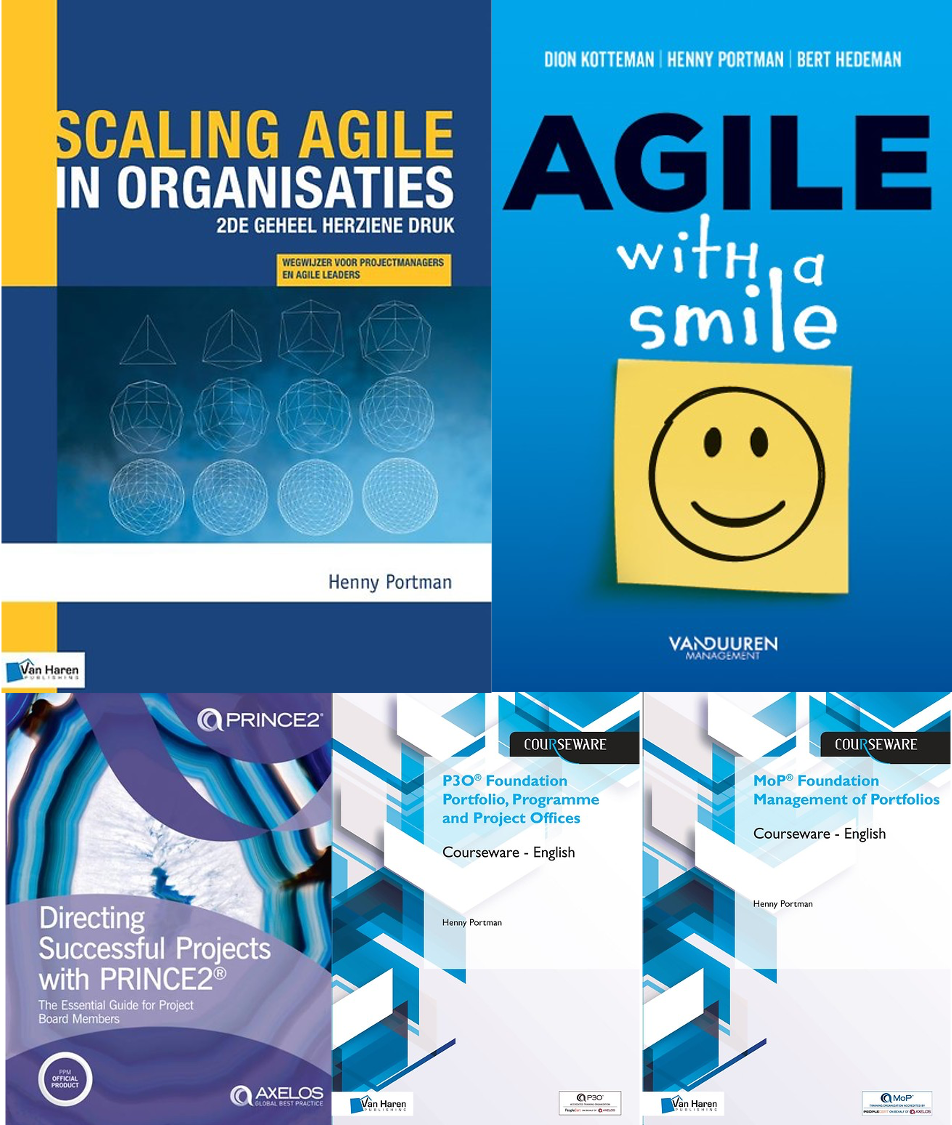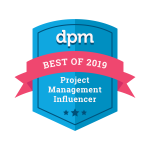
“The Courageous Sponsor – How to overcome challenges to get your project done” by Annie Sheehan helps project sponsors to improve their project outcomes. It offers practical lessons, cases, templates, checklists and actions.
The book takes you on a journey up the sponsorship productivity ladder, starting from level one, where sponsorship behavior is categorized as paralyzed, and a project that is out of the game. At level two, the behavior shifts to coping and making a move. Level three represents stability and routine drills. Level four involves learning and developing a game plan, while level five is about transforming sponsorship behavior and a project that is kicking goals.
The book is divided into three sections. The first section, “Prepare,” helps you get mentally and practically ready to be a courageous sponsor. The second section, “Experiment,” focuses on embracing curiosity and a learning mindset to achieve stability and make reliable progress. The final section, “Reflect,” emphasizes courage and vulnerability.
Prepare
The author identified six types of sponsors with similar characteristics and traits, grouping them into six sponsor personas. The first persona, the Peacock, is a sponsor who can’t be counseled and shouldn’t be a sponsor. The book focuses on the four personas in the middle: the aggressive Magpie, the avoidant Ostrich, the curious Duck, and the effective Eagle. The final one, the Owl is the role model.

Sponsor behavior has a big impact on the project team’s morale and performance. Courageous sponsor behavior directly relates to better project outcomes.
Sponsors value independence, but recognizing fear and asking for help can make the difference between thriving and drowning. To determine what help is needed, follow these action steps: notice the symptoms, do a brain dump, find people you can trust, and act on your decisions.
It is important to prioritize work, gain confidence in your decision-making, and equip yourself with the skills to let go of low-priority tasks. Be aware of optimism bias. The author uses a payoff matrix to help prioritize tasks. This 2×2 grid includes four quadrants: “Rethink,” “Chunk It Down,” “Do It Now,” and “Gold,” based on the value and effort required to complete each project or within an individual project each task. By focusing on fewer tasks, you can increase your success rates in implementing projects.
A separate chapter examines modeling the right behavior. It emphasizes setting up the team and environment to encourage practices that enable the best possible delivery of your prioritized projects. As a sponsor, you are part of the team and must honor and adhere to team agreements. You should role model the desired behavior and collaborate with your team to establish standards for what is acceptable and appropriate.
Experiment
The next section is about embracing the curiosity and learning mindset that are the desirable traits of the Duck sponsor.
You have a prioritized list and have agreed on how to work with your team. Now it’s time to show up, perform team drills, and turn your ideas into reality. Team drills focus on taking action, which builds confidence, skill, and capability, offering on-the-job learning and preventing analysis paralysis.
To run effective team drills, start by creating a positive mindset. Set a regular time for these drills and make sure to show up and take action immediately. Establish a clear timeframe for the drills and record your baseline to track progress. Support your team and foster a learning environment, then run a mini-retrospective to evaluate and improve the process. Document your progress throughout to maintain a clear record of achievements and areas for improvement.
To get the best out of your project manager and team, take it step by step and maintain the right mindset. Emphasize learning by doing and establish a consistent routine to create momentum. Focus on overcoming procrastination and take measures to avoid burnout, ensuring sustained productivity and well-being for your team.
Next, you need to debrief and reflect on what you have learned through your team drills. This helps you avoid the most common pitfalls of projects. Effective debriefing techniques include taking both micro and macro views, conducting retrospectives, and performing post-implementation reviews.
Giving and receiving individual courageous feedback is vital for building people’s confidence. Additionally, providing feedback on the work and the process during retrospectives and post-implementation reviews helps improve performance. Regardless of the outcome, celebrate your team’s persistent efforts toward the goal and show your appreciation for their hard work.
After completing your team drills, conducting post-practice debriefs, and reviewing the lessons learned, it is time to develop your longer-term game plan with strategic roadmaps. A roadmap serves as an overall plan from which more detailed plans can be developed. It includes your guiding light, the project purpose, and a macro-level prioritized plan with steppingstones and a schedule aligned with your purpose.
Success must be defined at the beginning of your project and measured at the end. At the strategic portfolio and program level, the balanced scorecard, which includes metrics such as client satisfaction and ROI, can be used. At the individual project level, critical success factors like time, cost, quality, and stakeholder satisfaction have proven to be the most effective.
To define success factors, follow these steps: reflect on your end game, determine what is most important, establish what is good enough, and publish your success criteria.
Reflect
The final section focuses on courage and vulnerability. Now it’s time to soar like an Eagle sponsor and adopt a broader perspective. Keep your stakeholders informed about your progress and make it easy for them to stay updated on the latest project news. Utilize visual management boards, showcases, communication forums, and actively invite and act on stakeholder feedback.
To conduct effective regular stakeholder meetings, consistently show up, have one conversation at a time, listen first, speak last, and continuously work on improving the next meeting.
During your project, you will face setbacks. It’s essential to recover from these setbacks so you can continue with confidence and show progress according to your updated roadmap. Demonstrate your achievements and any unexpected surprises to your sponsors.
Conclusion
“The Courageous Sponsor” is a valuable resource for both new and experienced project sponsors. The sponsor personas provide a great tool for self-reflection and evaluation of your actions. The book offers numerous techniques to learn from, with team drills and managing the number of initiatives in your project portfolio being particularly important. If you want to grow as a project sponsor, this book is an excellent starting point.
To order The Courageous Sponsor: bol., Amazon.com
















Thanks again Henny, I have just purchased it.